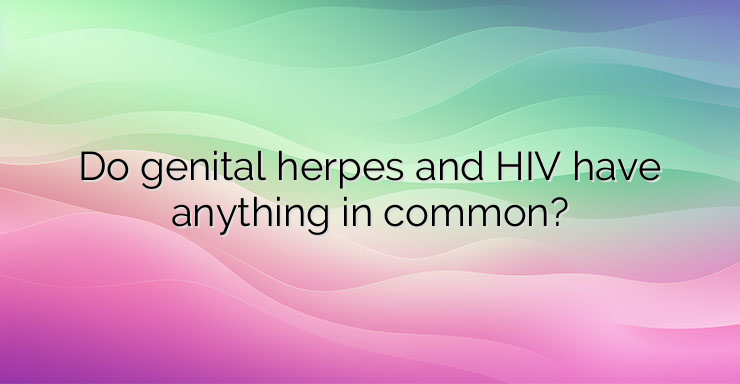Genital herpes is a sexually transmitted infection that can cause blisters and open sores (lesions) in the genital area, but it can also be asymptomatic, meaning a person shows no symptoms. Herpes simplex virus, also known as genital herpes, can be transmitted from an infected person without any symptoms. Medicines can help reduce symptoms, speed up the healing process, and reduce contagiousness. Although there is no cure for the disease, the severity of the virus varies over the course of an infected person’s life. In fact, some people with the disease show no symptoms for long periods. However, they can transmit the virus even when there are no obvious symptoms. What types of herpes viruses are known? There are two types of herpes simplex virus: Herpes simplex I and Herpes simplex II. Herpes simplex I usually causes oral herpes. This virus can present as an upper respiratory tract infection in early childhood. On the other hand, herpes simplex II is the cause of most cases of genital herpes. Clinicians cannot tell the difference between the two types by physical examination alone, but there are differences between the two viruses. For example, genital herpes caused by herpes simplex II is much more likely to recur. Transmission of the virus occurs during vaginal, anal or oral sex. Where does the herpes virus “live” in the body? Herpes simplex viruses can be latent for a long time, which means they can live in the body without causing symptoms. After the initial infection, the virus enters the nerve roots and spreads to the sensory nerve ganglia, where nerves from different parts of the body gather. For the genital area, the ganglia are adjacent to the spinal cord in the lower back. In orofacial herpes (canker sores), the ganglia are located behind the cheekbones. While some people with genital herpes will never show symptoms, others may develop clinical symptoms within a few weeks of infection. Most people notice a cluster of blisters or sores (lesions). These lesions sting and can be painful. They can appear in the gluteal area, anus or thighs, on the vulva or vagina in women and on the penis or scrotum in men. Often, before the lesions appear, patients describe a prodrome characterized by a tingling or burning sensation in the area where the lesions will develop, which can be noticed during urination, along with itching or discomfort in the genital area. Some patients report blistering of the mouth or lips, fever, headache or joint pain, dysuric disturbances. Genital herpes symptoms often go away and come back as recurring outbreaks. For most people, the first outbreak is the worst and can last two to three weeks. Future attacks are often less severe and do not last as long. However, some people transmit the virus regularly.Is genital herpes infection related to HIV? Herpes and HIV are caused by different viruses. But patients infected with these viruses transmit both diseases to their sexual partners. Patients with herpes are more vulnerable to HIV infection. People newly diagnosed with herpes should be tested for HIV infection and other sexually transmitted infections. Patients who are infected with both herpes and HIV may also have a higher concentration of HIV viruses in their body due to the interaction between the herpes virus and the HIV virus. Source: Genital Herpes | Johns Hopkins Medicine


Leave a Reply